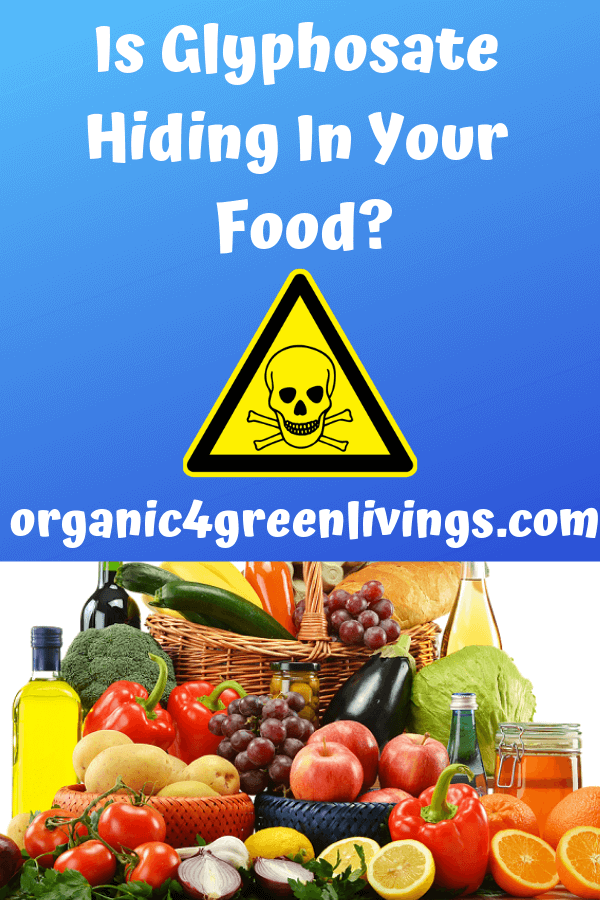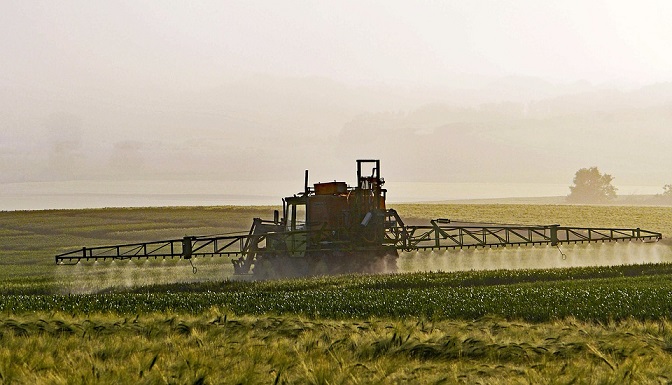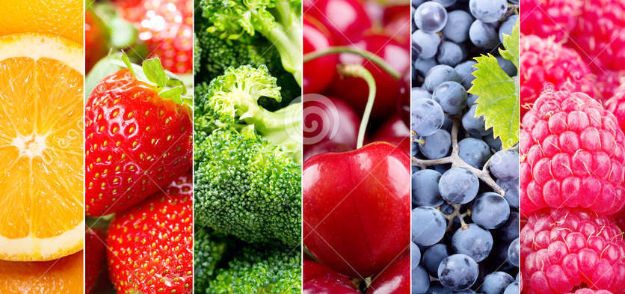Glyphosate: The Enemy Hiding in Your Fruits and Vegetables
In the modern age, farmers are constantly seeking ways to get the highest possible yields with the least amount of effort and expense. The answer seems to be centered around the development of advanced chemical pesticides and herbicides designed to target a wide range of weeds, diseases and various insects.
Considered an agricultural miracle, Roundup-brand herbicides have a well-proven history of unsafe use at home and in agricultural settings. For starters, Roundup is the star product of agrochemical giant Monsanto. Glyphosate, the active ingredient in Roundup, is the most widely used herbicide in the world, and awareness will grow in quantifying ecological and human health impacts.

Understanding the dangers of glyphosate
As the herbicide is viewed as incredible, many people use Roundup without questioning its safety. In May of 2015, the World Health Organization classified glyphosate as “probably carcinogenic to human”, based on studies done on animals that showed that glyphosate caused tumor growth or higher incidence of cancer. Several countries including Belgium, Argentina, Malta, Sri Lanka, and the Netherlands have banned the use of glyphosate. In the summer of 2017, the state of California saw enough evidence of its harmfulness to declare glyphosate a toxic cancer-causing chemical. Many research studies link this weed-killing chemical to a host of health risks, such as cancer, miscarriages, disruption of human sex hormones, diabetes, autism, obesity and heart disease.

Genetically engineered foods and glyphosate
A genetically modified organism (GMO), is an organism that has had its DNA altered or modified using genetic engineering techniques. It is well known that Roundup is sprayed directly on GMO crops because they are genetically engineered to withstand the toxic attack without withering. The herbicide kills all plant life apart from the crop. These crops are known as glyphosate-tolerant. People and animals that eat genetically engineered herbicide-tolerant food crops are ingesting high levels of residues of glyphosate.
Very important to notice is that glyphosate is now being used as a desiccant and sprayed on crops that are not genetically engineered in order to dry them out before harvest, which means food could be non-GMO and still sprayed with glyphosate. These crops include vegetables, wheat, barley, oats, sunflower seeds, and potatoes.
How is glyphosate getting into our fruits and vegetables?
The U.S. Food and Drug Administration (FDA) annual pesticide residue report found 82% of domestic fruits and 62% of domestic vegetables containing pesticide residues, included glyphosate.
It is important to understand that glyphosate is not just sprayed on fruits and vegetables – it is absorbed into plants and trees. Glyphosate sprayed on fruits and vegetables accumulates on the outer peel, but sometimes it can be also absorbed into the tissue. Thicker peels may be more effective at keeping glyphosate out of the flesh of some fruits and vegetables and so they were included by the Clean 15. Below is a list of the Dirty Dozen and the Clean 15!!
Environmental Working Group on the so-called “Dirty Dozen” produces items with the most pesticide residue, which include list:
1. Strawberries
2. Spinach
3. Nectarines
4. Apples
5. Grapes
6. Peaches
7. Cherries
8. Pears
9. Tomatoes
10. Celery
11. Potatoes
12. Sweet bell pepper and Hot peppers

The same group also identified a list of “Clean 15”
1. Avocados
2. Sweet corn
3. Pineapples
4. Cabbage
5. Onions
6. Sweet frozen peas
7. Papayas
8. Asparagus
9. Mangos
10. Eggplant
11. Honeydew melon
12. Kiwi
13. Cantaloupe
14. Cauliflower
15. Broccoli.
The recommendations are based on tests of pesticide residues on fruits and vegetables, performed by the U.S. Department of Agriculture after the produces has been washed.
Other potential routes through which glyphosate can enter the fruits can be absorption through leaves and other green tissues following contact with spray and through fruit drop in fall. Glyphosate residues persisting in the soil are available for root uptake by the tree. Consumers are dramatically alarmed that pesticide residue levels in food might be high enough that it may pose a health threat.
How to keep glyphosate out of your food
Just because a dish is low in calories doesn’t mean it is low in pesticide content. It is important to be aware of how you can avoid this harmful chemical in your diet. The following steps outline how to limit exposure to glyphosate:
- Choose to purchase organic fruits and vegetables and organically produced food whenever possible
- Washing fruits and vegetables rigorously can help reduce how much glyphosate you ingest
- Washing the non-organic produce you consume with a solution of baking soda may help to remove glyphosate residues on the surface of the fruits and vegetables
- In addition to washing, dry and wipe down fruits and vegetables, even produces that have an inedible outer layer. You can transfer the glyphosate residue into the flesh of fruit or vegetable when cutting or preparing them
- Wash down the utensils or dishware that held the produces prior to washing
- Peeling off and removing outer layers of certain types of produce it’s a good method of reducing glyphosate residues
- Look for 100% organic label
- Always read the ingredient list.
About the author:
Gregory A. Cade is the principal attorney and founder of Environmental Litigation Group, P.C. With over 25 years of experience and solid science background, Gregory A. Cade is naturally inclined to help injured people, be it in an occupational setting or in an environmental setting, in a mass setting or a class action setting. Patience, loyalty, and knowledge make Gregory A. Cade a powerful ally on the side of environmental victims.

Marla, Appreciate this article, but wanted to let you know that the headings for the lists are reversed. Strawberries, etc are on the dirty dozen list, while avocados, etc are on the clean list.
HI Nancy,
Thank you for letting me know that my heading were incorrect. I have corrected. Thanks for stopping by and commenting. Have a healthy, happy & blessed day.
Glyphosate within our foods is a scary thought – thank you for raising this important topic!
Yes it is a scary thought and it has affected so many people lives and causes so much heartache. It time we put an end to allowing these poisons in our food. Thank you for stopping by and commenting. Have a healthy, happy & blessed day!
Its fact; Glyphosate ;Systemic broad-spectrum herbicides which is is very dangerous and has long residual effect; due to which it enters in the plant system and ultimately become the part of fruits and all field crops. Moreover it is organophosphorous compound which is banned but 3rd world countries are still using.
HI Azhar,
I can’t argue with what you are saying. It is still being used in the US – they still sell Roundup or they were still selling it last summer so it is not just the 3rd world countries that used glyphsopate – in the US Monsanto made the conventional farmers use it if they signed up for their agricultural programs. Now there is still a lot of lawsuits going on at this current time for compensate to all the many people that got cancer from it. Thank you for stopping by & commenting.